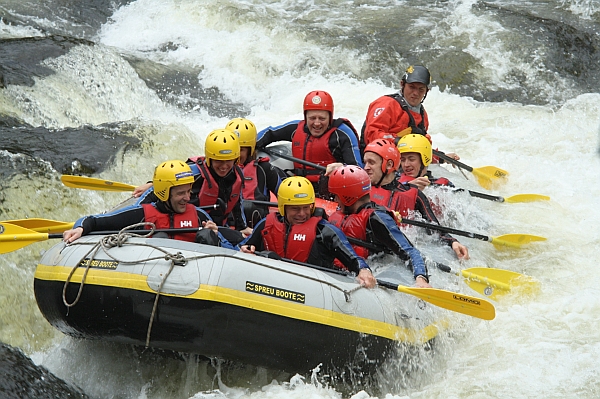Whitewater rafting is one of the best summer activities for beating the heat while having some adrenaline-pumping fun in the process. The sport used to be reserved for only the most hardcore athletes and daredevils, but safety precautions and guidelines have allowed a whole market for whitewater rafting to flourish. In order to guarantee your family has the most fun possible on your next vacation while protecting everyone from even minor injury, you should follow the safety tips outlined below.
1. Only Hire Professional Guides
Make sure that any whitewater rafting service or guide that you hire has the proper licensing and government approval to operate as a professional river guide. Professional operations will offer much more comprehensive safety briefings and equipment, and their training is usually far beyond that of a freelance river guide. They will be able to handle any situations as they arise with professionalism and responsibility.
2. Wear Appropriate Safety Gear
Your river guide may or may not stipulate that certain equipment is required, but it is a good idea to take advantage of anything at your disposal to protect yourself. Don’t worry about how you look, but make sure you and your family are comfortable in the equipment. Life jackets or other personal floatation devices should be worn, as well as helmets. It’s also a good idea to wear comfortable clothing that is appropriate for the time of year and the relatively wet activity of whitewater rafting.
3. Hold The Paddle Correctly
Your safety instruction should go over the proper method of holding the paddle, but the basic idea is that you keep one hand firmly wrapped around the ‘T’ end of the paddle, and the second hand grips the handle further down at a comfortable stance. The ‘T’ grip of the handle is often hard and blunted, which is why it is so important to maintain a firm grip. If the paddle were to free itself from your grip, it could easily knock out someone’s teeth or blacken someone’s eye. Not only that, but if you lose your paddle during the trip, you won’t have the ability to offer assistance during the descent.
4. Stay Low
It should go without saying that your number one priority is to stay inside the boat, and the best way to do that is to keep your center of balance as low as you can. Once you start really moving down the rapids it will become much more difficult to maintain your balance, and if your center of gravity is too high, you’ll probably topple into the churning water. Even in the lighter rapids, this is something you should work to avoid at all costs, not only for yourself, but for your family as well.
5. Review Swimming Techniques
There are a number of swimming techniques that are specific to rapids, and they will probably be reviewed by your river guide before you depart. Depending on the speed of the current, you may adopt one of several different techniques for escaping the worst of the torrent. It is vital that you never attempt to stand in a moving river since that is a great way for your feet to get stuck. If your feet get stuck under a rock and you’re forced under, you may never come back up.
This article was written by Ryan Thomas for Rocky Mountain Whitewater Rafting. Rocky Mountain Whitewater Rafting has guided thousands of whitewater rafting trips on Clear Creek and throughout Colorado.

